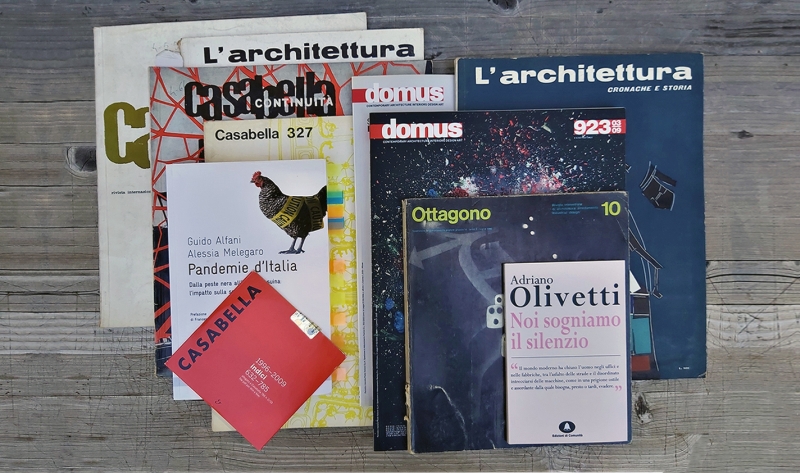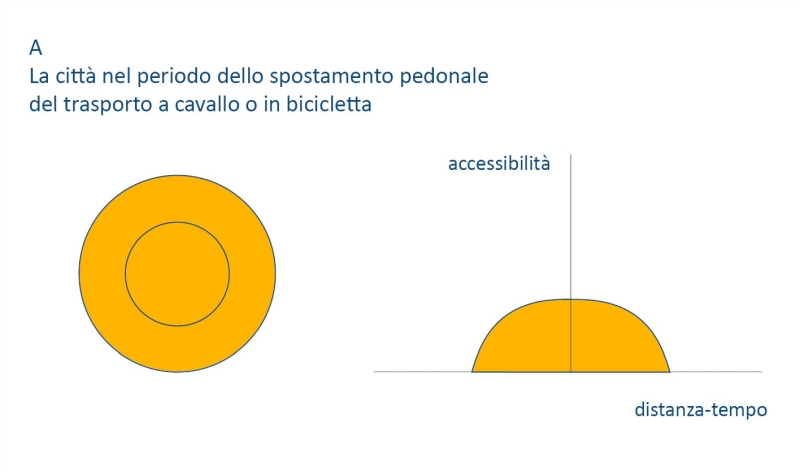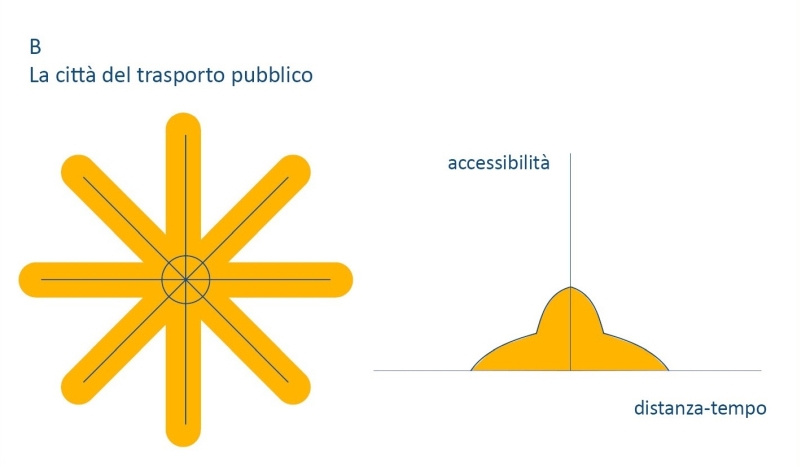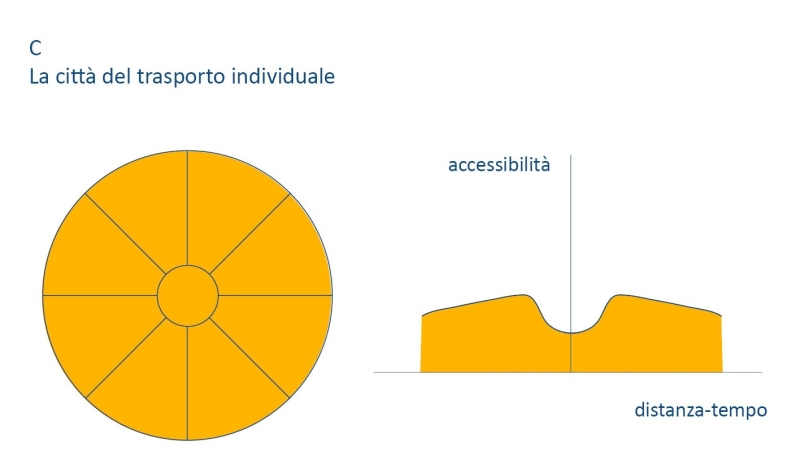Fig.
1 - Selection of the bibliographic sources reviewed. The magazines belong to the Passarelli Fund.

Fig.
2 - Schematization of the city’s structure and its
accessibility features. The drawings illustrate three primary phases of
urban development in relation to evolution in technology and
communications (reproduced from Allpass et alii 1968).

Fig.
3 - Schematization of the city’s structure and its
accessibility features. The drawings illustrate three primary phases of
urban development in relation to evolution in technology and
communications (reproduced from Allpass et alii 1968).

Fig.
4 - Schematization of the city’s structure and its
accessibility features. The drawings illustrate three primary phases of
urban development in relation to evolution in technology and
communications (reproduced from Allpass et alii 1968).
